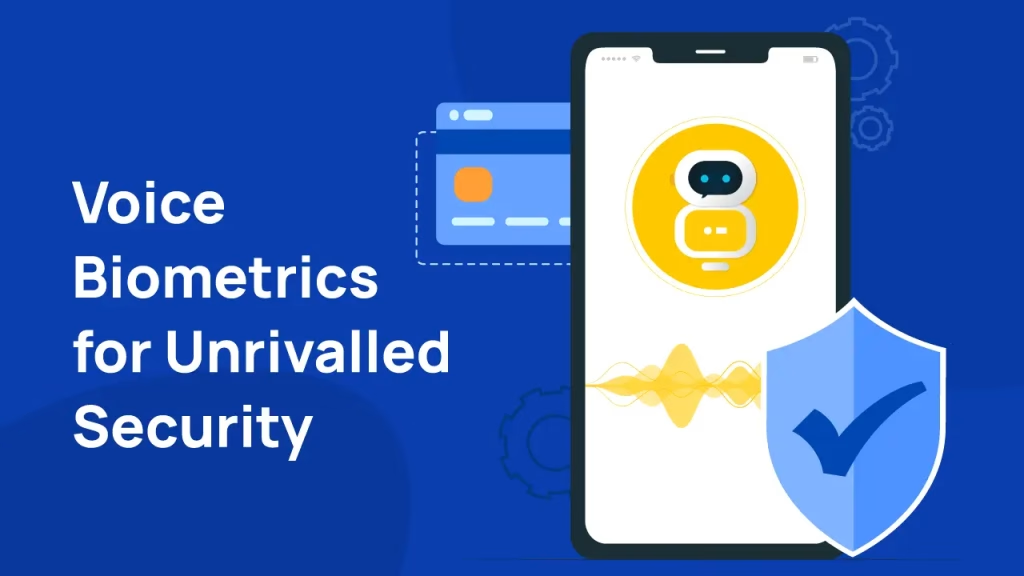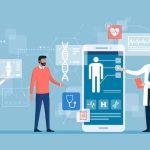In the ever-evolving landscape of technology and gadgets, one innovation stands out for its potential to revolutionize security: voice biometrics. As we delve into this fascinating subject, we’ll explore how voice biometrics work, their applications, benefits, and the challenges they face. This article aims to provide a comprehensive understanding of this cutting-edge technology and its implications for the future.
What Are Voice Biometrics?
Voice biometrics is a technology that uses an individual’s unique vocal characteristics to verify their identity. Unlike traditional passwords or PINs, which can be forgotten or stolen, voice biometrics rely on the distinct features of a person’s voice, making it a more secure and convenient method of authentication.
How Voice Biometrics Work
At the core of voice biometrics is the analysis of vocal patterns. When a person speaks, their voice is captured and converted into a digital format. This digital representation is then analyzed for unique characteristics such as pitch, tone, and rhythm. These features are used to create a voiceprint, which is stored in a database for future comparison.
When the individual attempts to access a system or service, their voice is recorded again and compared to the stored voiceprint. If the two match, access is granted. This process is not only quick but also highly accurate, making it an attractive option for various applications.
Applications of Voice Biometrics
Voice biometrics have a wide range of applications across different industries. Let’s explore some of the most prominent ones.
Banking and Financial Services
In the banking sector, security is paramount. Voice biometrics offer a secure and user-friendly way for customers to access their accounts and perform transactions. By simply speaking a passphrase, users can verify their identity without the need for complex passwords or security questions.
Healthcare
In healthcare, voice biometrics can be used to protect sensitive patient information. By ensuring that only authorized personnel can access medical records, this technology helps maintain patient privacy and comply with regulations such as HIPAA.
Telecommunications
Telecommunications companies are increasingly adopting voice biometrics to enhance customer service. By verifying a caller’s identity through their voice, companies can reduce the risk of fraud and improve the overall customer experience.
Government and Law Enforcement
Voice biometrics are also being used by government agencies and law enforcement to enhance security measures. For instance, they can be used to verify the identity of individuals accessing secure facilities or to monitor and track persons of interest.
Benefits of Voice Biometrics
The adoption of voice biometrics offers several advantages over traditional authentication methods. Here are some of the key benefits:
Enhanced Security
One of the primary benefits of voice biometrics is its ability to provide enhanced security. Since each person’s voice is unique, it is extremely difficult for fraudsters to replicate or steal. This makes voice biometrics a more secure option compared to passwords or PINs.
Convenience and Ease of Use
Voice biometrics eliminate the need for users to remember complex passwords or carry physical tokens. This convenience is particularly beneficial for individuals with disabilities or those who struggle with traditional authentication methods.
Cost-Effectiveness
Implementing voice biometrics can lead to cost savings for organizations. By reducing the need for password resets and minimizing fraud-related losses, companies can improve their bottom line.
Improved User Experience
With voice biometrics, users can enjoy a seamless and frictionless authentication process. This improved user experience can lead to higher customer satisfaction and loyalty.
Challenges and Limitations
Despite its many benefits, voice biometrics also face certain challenges and limitations. Understanding these issues is crucial for organizations considering the adoption of this technology.
Background Noise and Quality of Recording
One of the main challenges of voice biometrics is the impact of background noise and the quality of the recording. Poor audio quality can affect the accuracy of voice recognition, leading to false rejections or acceptances.
Variability in Voice
A person’s voice can change due to various factors such as illness, stress, or aging. These changes can affect the accuracy of voice biometrics, potentially leading to authentication errors.
Privacy Concerns
As with any biometric technology, voice biometrics raise privacy concerns. The collection and storage of voiceprints must be handled with care to ensure compliance with data protection regulations and to maintain user trust.
Technological Limitations
While voice biometrics have made significant advancements, there are still technological limitations to overcome. For instance, the technology may struggle with certain accents or dialects, affecting its accuracy and reliability.
The Future of Voice Biometrics
As technology continues to advance, the future of voice biometrics looks promising. Let’s explore some of the trends and developments that are shaping the future of this technology.
Integration with AI and Machine Learning
The integration of voice biometrics with artificial intelligence (AI) and machine learning is expected to enhance its accuracy and capabilities. By leveraging AI, voice biometrics systems can continuously learn and adapt to changes in a person’s voice, improving their reliability over time.
Expansion into New Industries
As the technology matures, we can expect to see voice biometrics being adopted in new industries. For example, the retail sector could use voice biometrics to personalize customer experiences, while the travel industry could streamline the check-in process with voice-based authentication.
Increased Focus on Privacy and Security
With growing concerns about privacy and data security, there will be an increased focus on developing voice biometrics systems that prioritize user privacy. This includes implementing robust encryption methods and ensuring compliance with data protection regulations.
Voice Biometrics in IoT Devices
The rise of the Internet of Things (IoT) presents new opportunities for voice biometrics. By integrating voice authentication into IoT devices, users can enjoy a more secure and convenient way to interact with their smart homes, cars, and other connected devices.
Real-World Examples of Voice Biometrics
To better understand the impact of voice biometrics, let’s look at some real-world examples of how this technology is being used today.
HSBC’s Voice ID
HSBC, a leading global bank, has implemented voice biometrics in its customer service operations. With Voice ID, customers can verify their identity by simply speaking a passphrase, making banking transactions more secure and convenient.
Barclays’ Voice Security
Barclays, another major financial institution, has adopted voice biometrics to enhance its security measures. By analyzing over 100 unique vocal characteristics, Barclays’ voice security system provides a high level of accuracy and protection against fraud.
Nuance’s Dragon TV
Nuance, a leader in voice recognition technology, has developed Dragon TV, a voice biometrics solution for the television industry. With Dragon TV, users can control their TVs and access content using voice commands, offering a more intuitive and personalized viewing experience.
Conclusion
Voice biometrics represent a significant advancement in the field of security and authentication. With its ability to provide enhanced security, convenience, and cost-effectiveness, this technology is poised to transform various industries. However, it is essential to address the challenges and limitations associated with voice biometrics to ensure its successful adoption.
As we look to the future, the integration of voice biometrics with AI, the expansion into new industries, and the focus on privacy and security will play a crucial role in shaping the trajectory of this technology. By staying informed and embracing these developments, organizations can harness the power of voice biometrics to enhance their security measures and improve the user experience.


